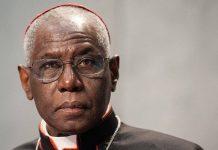What is Catholicism? What does it mean to be Catholic? In this article we revisit some of the main components of our Faith.
Gaudium Press English Edition (18/10/2022 1:52 PM, Gaudium Press) These two questions, more than ever, need to be answered and (re)presented, so that the Catholic faith is not just a set of rules, a cluster of obligations, prohibitions or punishments, but a living, illuminating and inspiring experience. Therefore, it is urgent to understand that Catholicism is more than a religion. Catholicism is more than most people think. The essence of Catholicism is a dynamic transformation and a lifestyle.
The Catholic faith as a lifestyle, besides offering a salvific eschatology, contributes very effectively so that, already, in this life, each believer becomes the best version of himself, having as a reference the person and life of the Founder of Catholicism, who was not Constantine in the 4th century, but Jesus Christ when he became incarnate, lived, died, rose again and became present in the Holy Eucharist. But what does the Catholic faith possess that is so enchanting and alive? What do we alone have in fullness and breadth?
The main elements of the Catholic faith
Some main elements of the Catholic faith are:
(a) The centrality of Jesus Christ as the only and Supreme Saviour;
b) The living and real presence of Jesus Christ in the seven Sacraments, instituted by Himself;
c) Affection and filial devotion to the Blessed Virgin Mary;
d) The Church and its ecclesiastical institutional organization.
These four living realities are, in a way, a set of bimillennial spiritual experiences and practices, full of spiritual wisdom that have subsisted throughout the centuries and have never ceased to exist.
This modus operandi under the aesthetic format of practices, rites, cults, and venerations, although old, are new, dynamic, current, alive, and able to communicate strength, peace, encouragement, and above all, to provide an encounter with the same Jesus Christ who has gifted us with such blessings. The Catholic faith, or if you prefer, the Catholic Church, is like a tree that has long, deep roots, which, more than two thousand years ago, was planted in the soil of humanity and which withstands every kind of storm (Cf. Mt 16:18-20).
Belonging, being connected to this tree, and remaining united to it, like the branch on the vine (Jn 15:5), produces a strong sense of security, stability and confidence that in the next storm that comes, in the form of: sickness, betrayal, material or emotional losses, death of a loved one, unemployment, financial difficulties, natural disaster, marital discord, pandemics, or anything else, we will be sheltered under the shadow of the Church, under the shadow of Jesus Christ.
These and other adversities in life are inevitable, they come without warning, and so we need to be ever more united to God by the Holy Eucharist, by filial trust in the Blessed Virgin Mary, and by engagement in Church life.
But it is necessary to become stronger!
Nourishing oneself with these practices and beliefs are indispensable for us to get through, endure, overcome, move forward and face any storm. Much more than facing and passing through storms, it is to transform weaknesses into strengths, weaknesses into fortitude, to rise, turning ever more toward the centre of our hope, Jesus Christ, alive and present in all the tabernacles of the earth.
But, how are your practices going? How are you strengthening yourself spiritually? How often do you go to church?
Concluding
In this time of pandemic, where many of the faithful have shunned the face-to-face participation in the Church, out of fear, over cautiousness, or for other reasons, more than ever, we need to return, to return to the Father’s House, especially on Sundays, to feed our hope with the Living Bread come down from Heaven (Jn 6:48-49), because the Divine grace, present in the Eucharist, and the intercession of the Blessed Virgin Mary, are indispensable for us to fulfill our mission in this world.
By Father Arilço Chaves Nantes (Diocese of Naviraí-M)



































